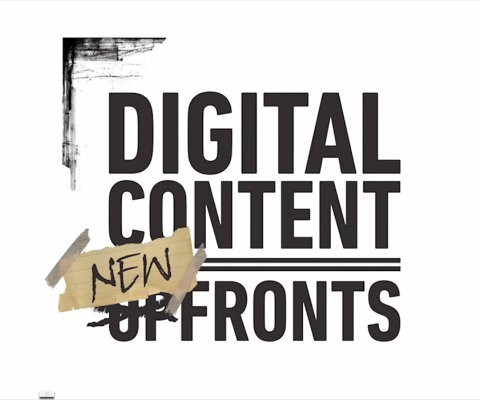
“Come tv with us” was the title of Hulu’s presentation at the IAB Digital Content NewFronts in New York City last week. And a suitable tagline it was, with the company announcing a slate of new and revived original programming including “The Path”, “Shut Eye”, “The Mindy Project”, “Difficult People” and “Chance”, which features Hugh Laurie in the lead role.
Hulu says it has seen a 30 percent increase in subscribers over the last 12 months and will reach 12 million subscribers this month. It is touting itself as Netflix with ads, and is attempting to enhance and improve the ad experience on its platform, also delivering better measurement for over-the-top formats.
The company announced at NewFronts that it is partnering with BrightLine to deliver interactive advertising developed for connected televisions, which apparently is where 70 percent of Hulu viewing occurs.
Essentially the ads function in the same way that interactive units do on a laptop or device, allowing viewers to visit the advertiser’s site and/or interact within the ad (like selecting different car colours, seeing show times for movies, and so on). This is a first-to-market service that sets up Hulu as a streaming service operating like traditional TV, and the icing on the cake for advertisers is that it will include collaboration with Nielsen for measurement. The service will be the first time advertisers can capture audience numbers on connected TV and living room devices.
The initiative includes a partnership with Millward Brown to conduct research and produce papers on the OTT advertising, with Magna Global as a beta partner in the projects.
Nielsen already runs measurement on streaming with companies like Hulu and Netflix, but Hulu representatives pointed out on Wednesday morning that this venture will focus just on campaign measurement.
Further to the advertising buzz it created, there was also talk of integrated advertising (think product placement) in its original content. It highlighted its partnerships with the Goose Island Beer Company and Lexus, which have been integrated into its original content.
Is this the future of TV? It is hard to argue that it isn’t. Magna Global also announced at the NewFronts that it is shifting around $250 million from its traditional TV budget into Google Preferred (what Google rates as its top 5 percent of videos on YouTube) over the next few years. This represents a change for the company, as it has in the past sourced digital video budgets from its digital and print budgets (committing around $100 million in 2014).
YouTube has also released the results compiled from various studies of viewing data (mostly commissioned by Google) that paints a very rosy picture of digital video’s future. According to a report from the LA Times, YouTube CEO Susan Wojcicki announced at the NewFronts that YouTube reaches more 18- to 49-year-olds than any broadcast or cable TV network.
Some of the more important findings of the studies include:
- In 2015, 18- to 49-year-olds spent 4% less time watching TV, while time on YouTube went up 74%
- In an average month, 8 out of 10 18- to 49-year-olds watch YouTube.
The same study also states that by 2025, half of viewers under the age of 32 will not subscribe to a pay TV service (based on a 2015 Forrester Research study of 55,000 U.S. adults).
This scale of investment in digital video by companies like Magna Global is partially the result of a drive by Google to show the lift in sales from video advertising. YouTube has been measuring offline sales lift for CPG brands through a product calledDLX ROI developed in partnership with Oracle Data Cloud. YouTube introduced TrueView a few years back, but it has never measured actual sales impact, being more focused on brand awareness and purchase intent. Bringing DLX ROI into that mix has changed that dramatically: An article on Google’s Ad Words blog discussing DLX ROI notes that Gatorade’s “We Love Sweat” campaign earned $13.50 sales in return for every dollar spent on TrueView.
And it is data like this, showing an actual return on investment, that is seeing companies grow more confident in shifting dollars into digital video. Add to that the predictions for the growth of digital video, the multitude of streaming services offering bundles that include VR and live content as well as original content, and it appears that it already is the big thing, and set to get much bigger.
What this means for pay TV is unclear, other than they need to catch up and adjust to changing consumer demands and habits to avoid suffering from potentially prolific cord-cutting. How that actually happens is open for debate, but it will inevitably mean they need to radically innovate the entire business model. Because if you can get the same value for hundreds of, or even a thousand, dollars less per year, and watch it anywhere, anytime, why wouldn’t you? It is good to be viewer these days because we really do have the power, and the decisions we make will certainly shape the future of entertainment.